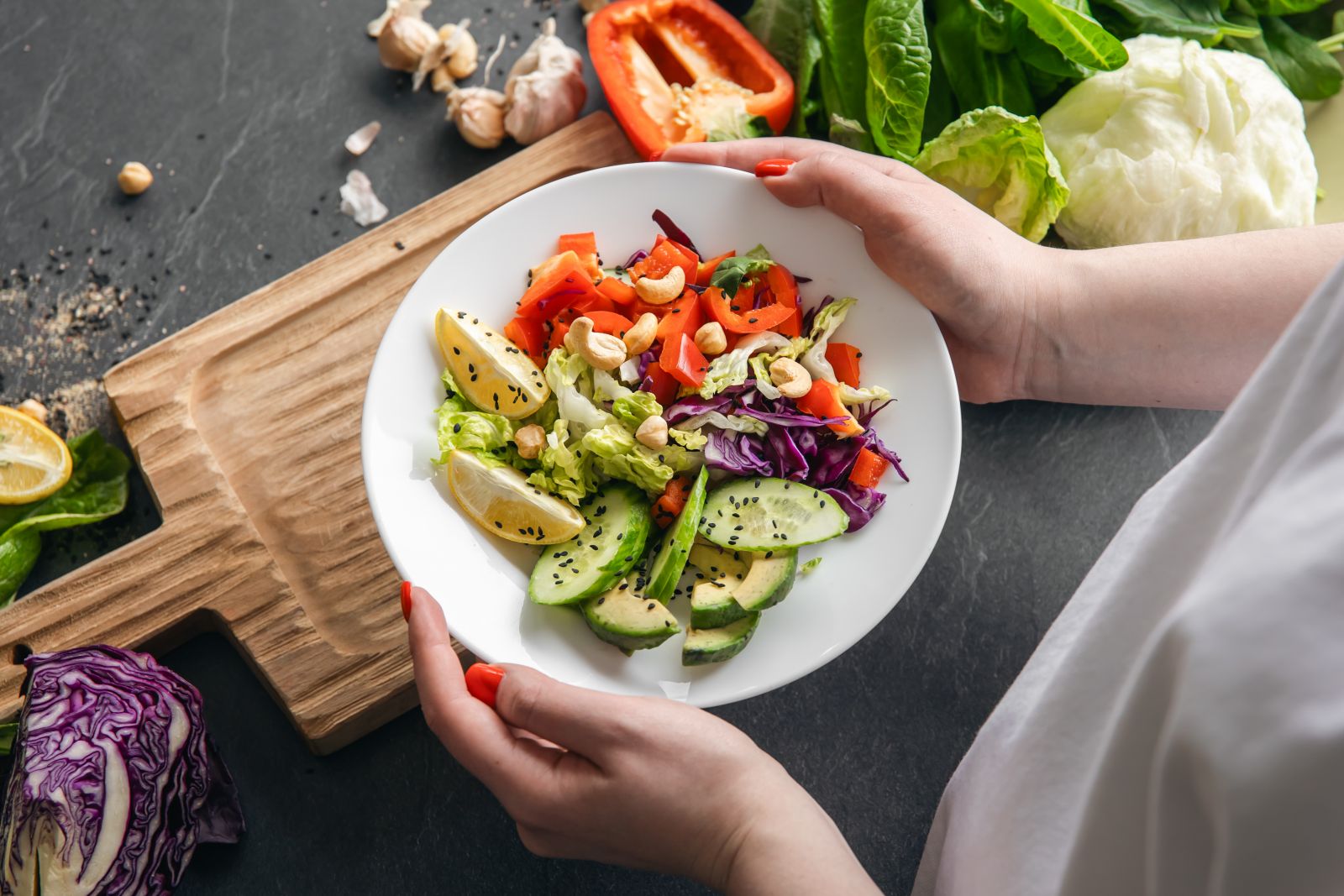1. Get Creative with Colors
Think about making your dishes colorful using your creative ideas! Use ingredients available in your fridge or freezer. You don’t need complex dishes, just make them simple, easy, and quick to prepare. For example, an omelet with spinach, mushrooms, and tomatoes, or a yogurt bowl with mango, kiwi, and strawberries. The more colors, the prettier the appearance, and the more nutrients you get.
Additionally, making smoothies is an easy way to consume more colors. For example, one smoothie with at least three different colored ingredients (such as banana, strawberry, and kale) or focusing on different colors each day of the week (such as celery, kale, cucumber, and pineapple on Monday, blueberries and dragon fruit on Tuesday, and so on).
 Utilize creative ideas to maximize colors in a dish.
Utilize creative ideas to maximize colors in a dish.
2. Try Something New
If the fruits you often consume are just bananas, papayas, or oranges, try buying other fruits. Look for a new fruit or vegetable when you go to the store or market. If you have children, let them choose, as they are more likely to try something they pick themselves.
3. Add to Your Meals
Think about the meals you often make, then find new ideas to make them more colorful than usual. For example, add mushrooms and spinach to spaghetti Bolognese, add potatoes, carrots, chayote squash, and scallions to beef soup, or add lettuce, purple cabbage, and tomatoes to an egg sandwich.
4. It Doesn't Have to Be Whole Fruits or Vegetables
Remember, even if you only add one piece or one slice (not using whole fruits or vegetables, such as an entire apple or a whole head of broccoli), the color still counts. So, you can chop or slice them before adding them to recipes, for example, in a salad made of chopped green lettuce, purple cabbage, baby tomatoes, corn, and chicken breast.
 Adding color doesn’t always have to be in whole forms; it can be just pieces or slices.
Adding color doesn’t always have to be in whole forms; it can be just pieces or slices.
5. Cook in Different Ways
Vegetables that are just boiled may not be appealing, especially to children. Therefore, try cooking them in different ways, such as roasting, sautéing, or steaming. Some vitamins can easily be lost when boiled, so cooking them in various ways is better than sticking to just one method.
6. Store in Visible Places
Buy various colorful fruits and vegetables and store them in visible places. For example, a fruit basket in the middle of the kitchen table or a shelf near the refrigerator. The key is to place these foods in spots often seen or passed by. Besides attracting attention, you won’t just leave them until they rot, right?
By adding various colors to your daily dishes, you not only make the food more visually appealing in texture and taste, but also ensure you get a range of essential nutrients. One of the keys is to use creativity in preparing and presenting food. Every small step will make a big difference. So, don't hesitate any longer!
You can check your nutrient intake at Newfemme!

